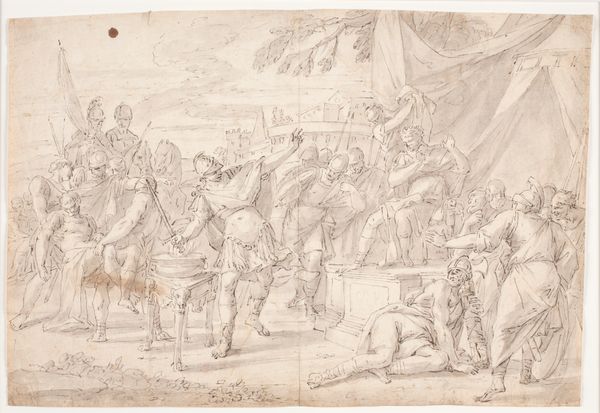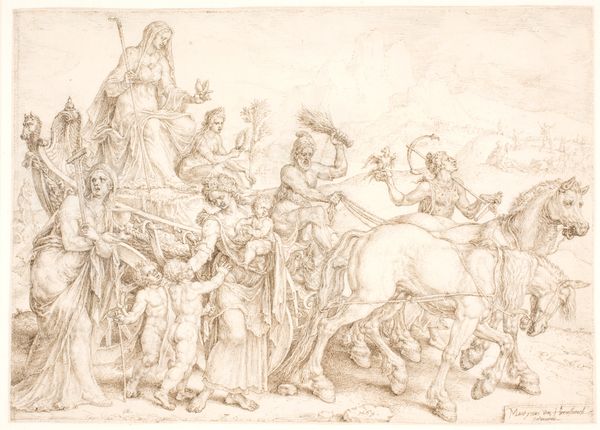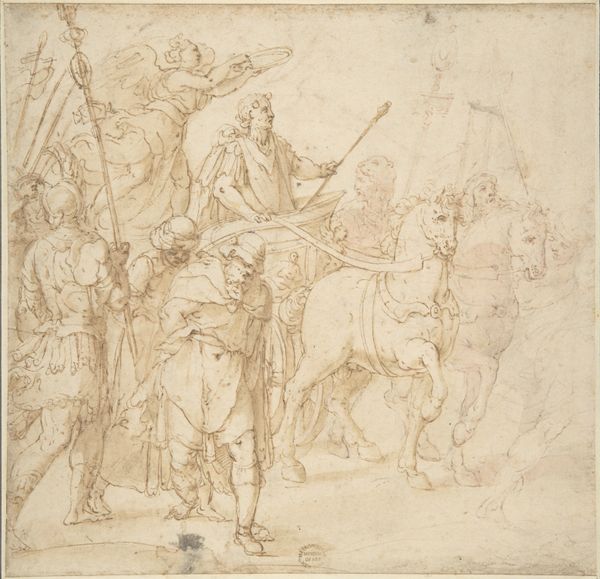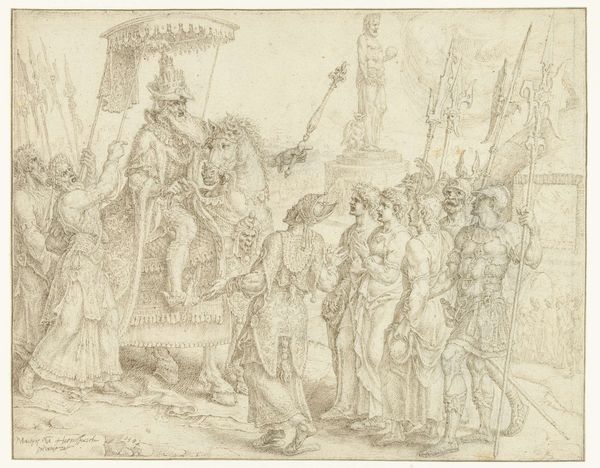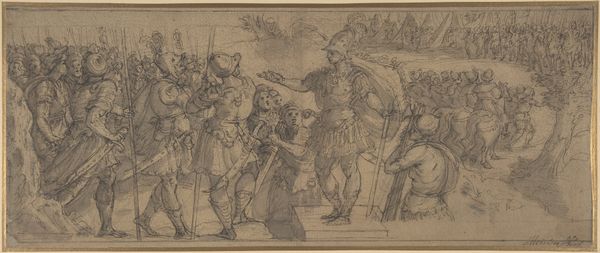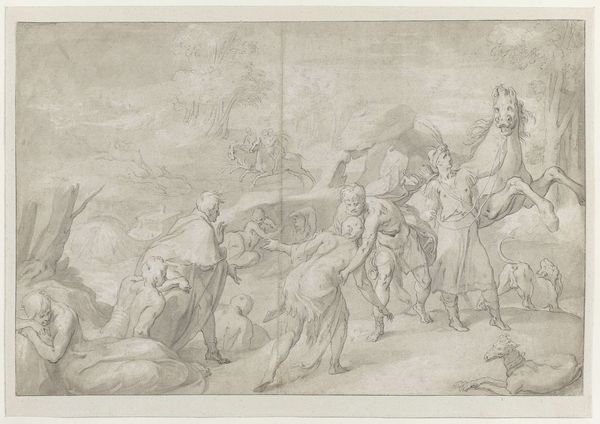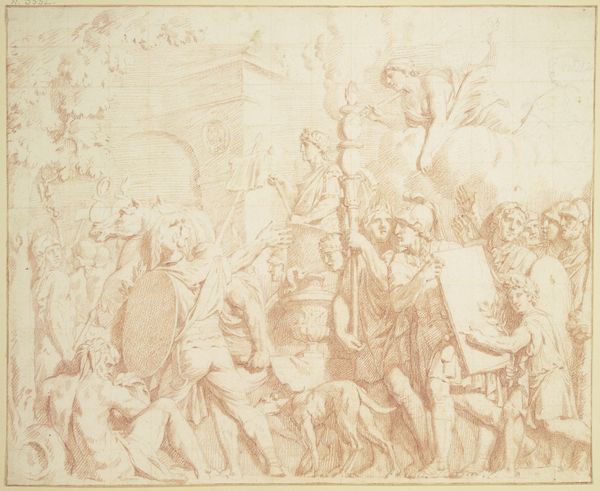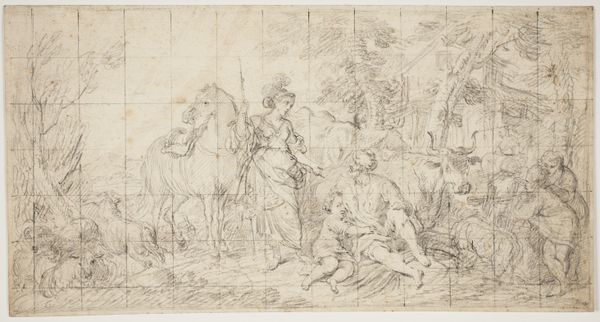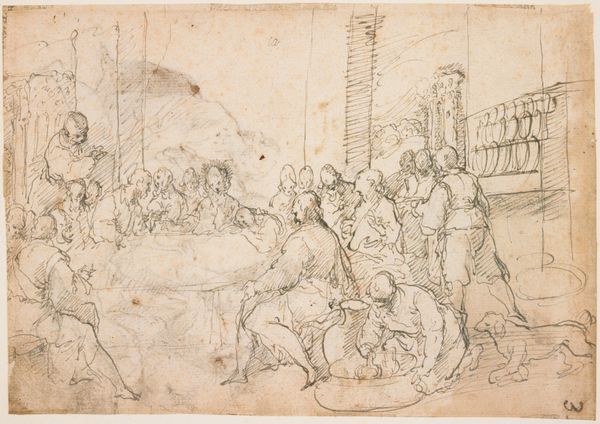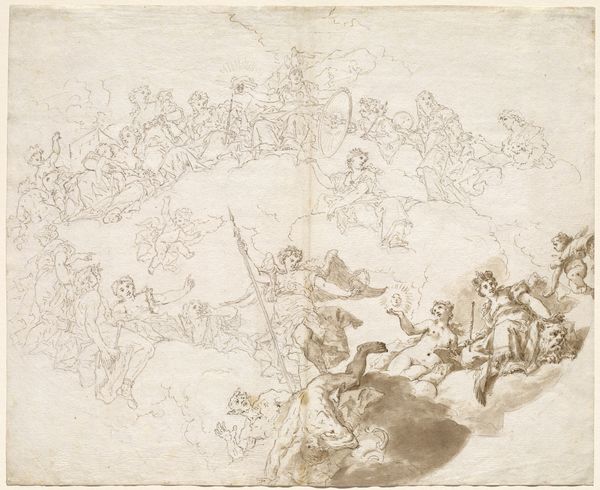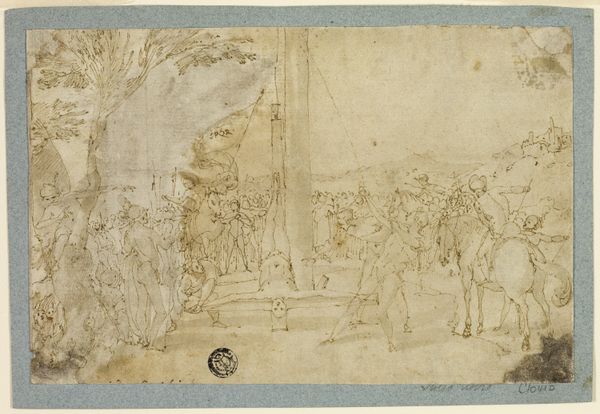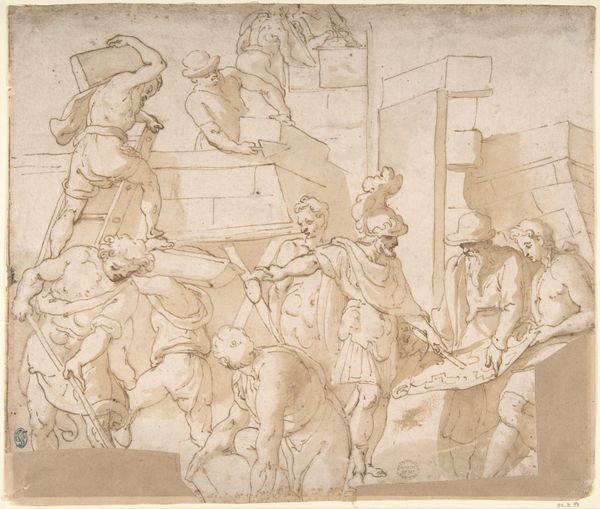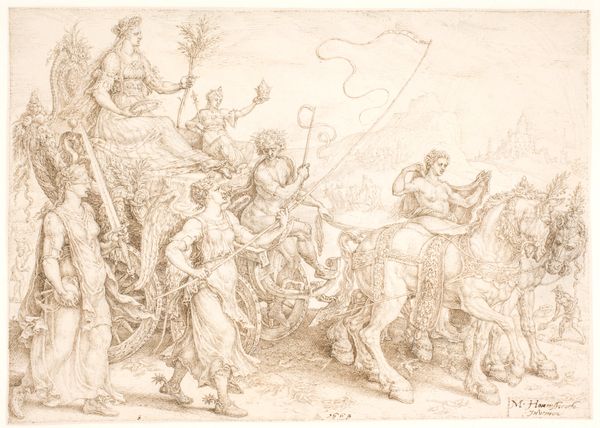
drawing, paper, ink, pencil
#
portrait
#
drawing
#
baroque
#
landscape
#
figuration
#
paper
#
ink
#
pencil
Dimensions: 6 5/8 x 7 5/16 in. (16.83 x 18.57 cm)
Copyright: Public Domain
This anonymous drawing titled ‘Mounted Officer’ presents an intriguing glimpse into the military culture of its time. The composition, rendered in ink, depicts an officer on horseback, leading a company of soldiers, with figures and dogs in the foreground. The grid-like structure beneath the composition suggests the work may have been preparatory, perhaps for a print or larger painting. This element connects it to the printmaking institutions and visual culture of its time. The image itself presents the pomp of military authority with its mounted officer and uniformed soldiers. Is it self-consciously conservative in its presentation of military authority, or does it contain elements of critique? To understand this work better, we might look to military history, visual culture, and the institutions that shaped artistic production. Ultimately, its meaning lies in the convergence of these social and institutional contexts.
Comments
minneapolisinstituteofart almost 2 years ago
⋮
This drawing may be related to the important series of battle pictures commissioned by Philip IV to decorate the Hall of Realms in his palace of the Buen Retiro in Madrid in the 1630s. The twelve pictures recount triumphs of the Spanish military throughout Europe and the New World, with the preeminent Spanish artists of the period contributing works, including Velasquez (1599-1660). This drawing conforms to the established format of the series: a victorious Spanish general in the foreground, with a panoramic view of the battlefield behind. The drawing is also remarkably consistent with the Hall of Realms paintings in style of execution and in details of fashion and hair. It is squared for transfer and then numbered from right to left, suggesting that the artist intended the work to be reversed, perhaps in order to execute a print or tapestry. The tantalizing clues raise hopes that further research may yield the identity of the artist who executed this fluent and accomplished sheet.
Join the conversation
Join millions of artists and users on Artera today and experience the ultimate creative platform.
